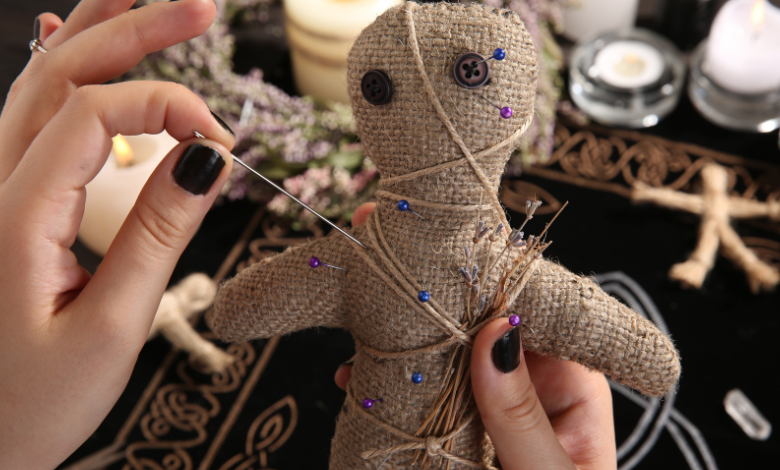Thezburg Voodoo: Mysteries and Traditions

Thezburg Voodoo is a fascinating and enigmatic tradition that has captivated the interest of many. This article explores the origins, practices, and cultural significance of , shedding light on its rich history and the role it plays in the communities where it is practiced.
Table of Contents
- Introduction to
- Historical Background of
- Core Beliefs and Practices
- The Spirits of Thezburg Voodoo
- Rituals and Ceremonies
- Symbols and Sacred Objects
- The Role of the Priest or Priestess
- Thezburg Voodoo in Contemporary Society
- Common Misconceptions and Stereotypes
- The Cultural Impact of
- Comparisons with Other
- Challenges Facing Practitioners
- The Future of Thezburg Voodoo
- Conclusion: The Enduring Legacy of Thezburg Voodoo
1. Introduction
Thezburg Voodoo is a unique form of spiritual practice that originated in the region of Thezburg. It combines elements of African spiritual traditions, indigenous beliefs, and aspects of Christianity, creating a distinctive and rich cultural tapestry.
2. Historical Background
The origins of can be traced back to the transatlantic slave trade when African slaves brought their spiritual beliefs and practices to the New World. These traditions blended with local indigenous practices and elements of Christianity, evolving into what is now known as Thezburg Voodoo.
3. Core Beliefs and Practices
The Divine and the Spirits
Thezburg Voodoo is polytheistic, with a pantheon of deities and spirits that play a central role in the lives of its practitioners. These spirits are believed to influence various aspects of the natural world and human life.
Ancestor Worship
Honoring ancestors is a crucial aspect of . Ancestors are revered and called upon for guidance, protection, and blessings.
Magic and Healing
Thezburg Voodoo incorporates magical practices and healing rituals. Practitioners use herbs, potions, and other traditional methods to address physical, emotional, and spiritual ailments.
4. The Spirits of Thezburg Voodoo
The spirits, known as Loa, are intermediaries between the divine and the human world. Each Loa has its own personality, domain, and specific rituals associated with it. Major Loa include Legba, the gatekeeper; Damballa, the serpent spirit; and Erzulie, the spirit of love and beauty.
5. Rituals and Ceremonies
Rituals and ceremonies are essential to , often involving drumming, dancing, singing, and the use of sacred objects. These rituals are performed to honor the spirits, seek their assistance, and maintain harmony between the physical and spiritual worlds.
6. Symbols and Sacred Objects
Veves
Veves are intricate symbols drawn on the ground to invoke specific spirits. Each Veve is unique to a particular Loa and serves as a spiritual gateway.
Sacred Items
Sacred objects such as altars, candles, and offerings play a vital role in rituals. These items are used to create a conducive environment for spiritual communication.
7. The Role of the Priest or Priestess
Thezburg Voodoo priests and priestesses, known as Houngans and Mambos, are central figures in the community. They act as spiritual leaders, healers, and mediators between the spirits and the people. Their knowledge of rituals, chants, and traditional medicine is passed down through generations.
8. Thezburg Voodoo in Contemporary Society
Thezburg Voodoo continues to thrive in contemporary society, adapting to modern influences while preserving its core traditions. It plays a significant role in the cultural identity of the Thezburg community and is practiced both openly and privately.
9. Common Misconceptions and Stereotypes
Thezburg Voodoo, like many other voodoo traditions, is often misunderstood and misrepresented. Common misconceptions include the association with black magic and harmful practices. In reality, is a complex and deeply spiritual tradition focused on healing, harmony, and respect for the natural world.
10. The Cultural Impact of Thezburg Voodoo
Thezburg Voodoo has had a profound cultural impact, influencing music, art, dance, and folklore. Its rituals and symbols are deeply embedded in the cultural fabric of the region, contributing to a rich and diverse heritage.
11. Comparisons with Other Voodoo Traditions
While shares similarities with other voodoo traditions, such as Haitian Vodou and Louisiana Voodoo, it has unique elements that distinguish it. These include specific Loa, rituals, and the integration of local cultural practices.
12. Challenges Facing Thezburg Voodoo Practitioners
Practitioners of face various challenges, including religious discrimination, cultural appropriation, and the erosion of traditional knowledge. Efforts are being made to preserve and protect this valuable cultural heritage.
13. The Future of Thezburg Voodoo
The future of looks promising as interest in traditional spiritual practices grows. Younger generations are increasingly involved in preserving and revitalizing their cultural heritage, ensuring that remains a vibrant and dynamic tradition.
14. Conclusion: The Enduring Legacy
is a testament to the resilience and adaptability of cultural traditions. Its rich history, profound spirituality, and enduring cultural impact make it a vital part of the Thezburg community. As we continue to explore and understand , we gain valuable insights into the complexity and beauty of human belief systems.
In conclusion, is not just a spiritual practice but a way of life that reflects the deep connection between people, nature, and the divine. Embracing and respecting this tradition allows us to appreciate the diversity and richness of our shared cultural heritage.



